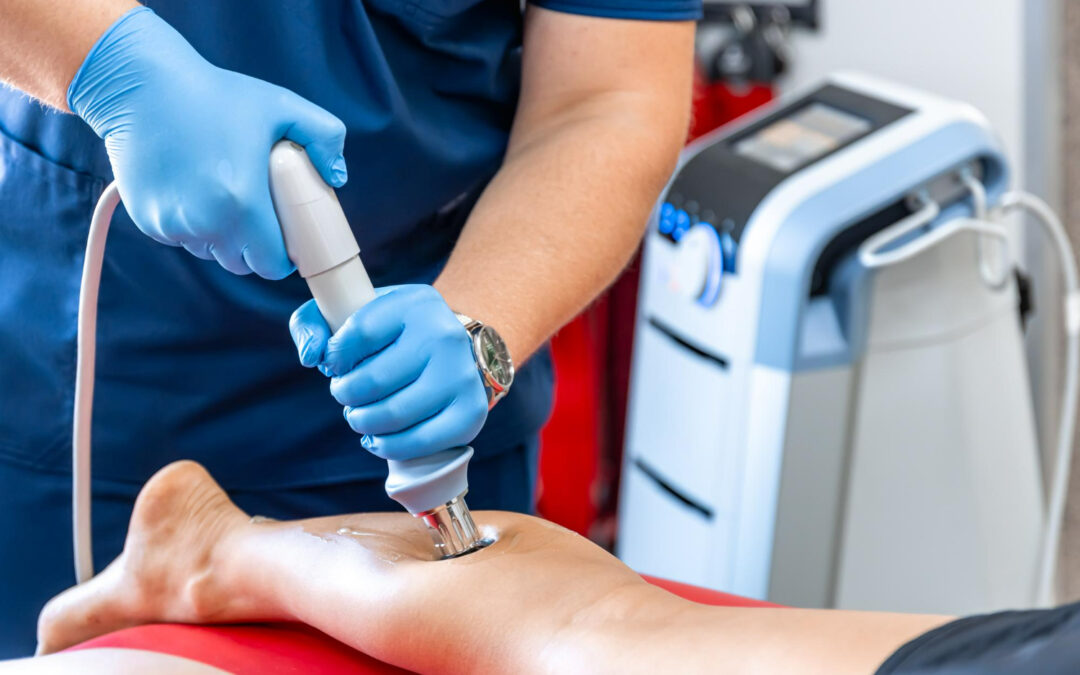Plantar fasciitis stands as a pervasive and incapacitating foot ailment. The discomfort and impediments it imposes on daily activities underscore the critical need for efficacious treatment options.
Conventional treatments, while offering relief to some, often fall short of providing enduring solutions. The quest for a more comprehensive and lasting remedy has led to the emergence of shockwave therapy.
As we delve deeper, the following sections will unravel the nuances of shockwave therapy, providing a roadmap to understanding its efficacy and integrating it into the broader discourse of foot health.
Understanding Plantar Fasciitis
Plantar fasciitis is a prevalent foot condition characterized by inflammation of the plantar fascia, a thick band of tissue that runs across the bottom of the foot which connects the heel bone to the toes. The causes can vary, encompassing factors such as overuse, improper footwear, abnormal foot mechanics, and even certain medical conditions.
Its hallmark symptom is persistent heel pain, particularly during the first steps in the morning or after prolonged periods of rest. This pain may also manifest as a sharp, stabbing sensation along the bottom of the foot. As the condition progresses, discomfort can extend beyond the heel, affecting the arch of the foot.
Traditionally, the approach to managing plantar fasciitis has involved a combination of conservative measures. These may include rest, ice application, stretching exercises, and the use of orthotic devices. Nonsteroidal anti-inflammatory drugs (NSAIDs) are often prescribed to alleviate pain and inflammation.
However, because of its limitations, individuals and healthcare professionals are exploring alternative and more advanced interventions, such as shockwave therapy.
Enter Shockwave Therapy
Shockwave therapy involves the application of acoustic waves to the affected area, promoting accelerated healing and regeneration. The waves are high-energy pulses that stimulate the body’s natural healing processes.
The mechanism of action is rooted in the concept of mechanotransduction. Essentially, the shockwaves create microtrauma at the cellular level, triggering a cascade of biological responses. This includes the release of growth factors, increased blood circulation, and enhanced tissue repair. In simpler terms, shockwave therapy jumpstarts the body’s healing mechanisms to address the root causes of conditions like plantar fasciitis.
Types of Shockwave Therapy
There are two primary types of shockwave therapy: focused and radial.
Focused shockwave therapy involves delivering highly concentrated shockwaves to a specific point in the affected area. It is particularly effective for targeted treatment of localized conditions like heel spurs associated with plantar fasciitis.
In contrast, radial shockwaves are dispersed over a larger treatment area. This approach is suitable for broader conditions, promoting healing and reducing pain more diffusely.
The Process of Shockwave Therapy
Pre-treatment assessment
Before embarking on shockwave therapy, a thorough pre-treatment assessment is conducted. This involves a comprehensive examination of the patient’s medical history, the severity of the plantar fasciitis, and any underlying health conditions. Diagnostic imaging, such as X-rays or ultrasounds, may be used to precisely identify the affected areas.
Session details and duration
During each session, a trained healthcare provider utilizes a specialized device to deliver acoustic waves to the targeted areas of the foot. It typically ranges from 15 to 30 minutes, depending on the specific protocol and the patient’s response.
The number of sessions required can vary based on the severity of plantar fasciitis and the individual’s response to treatment. Generally, patients undergo 1-3 sessions per week, spread out over several weeks. Its cumulative effect enhances the therapy’s effectiveness and promotes sustained relief.
Possible side effects and precautions
Patients may experience temporary discomfort, redness, or swelling at the treatment site. It’s crucial to follow post-treatment care instructions provided by the healthcare provider, including any prescribed medications or activity restrictions.
Individuals with certain medical conditions, such as blood clotting disorders or infections, may not be suitable candidates for shockwave therapy. Pregnant women should also exercise caution, and the treatment is generally avoided in proximity to bone growth plates in adolescents.
As with any medical intervention, consultation with a qualified healthcare professional is essential to determine the appropriateness of shockwave therapy for plantar fasciitis in a specific case.
FAQs About Shockwave Therapy for Plantar Fasciitis
- Can plantar fasciitis cause calf pain?
Yes. When the plantar fascia is inflamed, the pain may extend into the calf. This pain can be attributed to the interconnectedness of the muscles and fascia in the lower limb. Therefore, tightness or pain in the calf region may be experienced.
- Can acupuncture help plantar fasciitis?
Yes. Acupuncture may help release tension in the muscles, reduce inflammation, and improve blood flow to the affected area. However, it’s important to consult with a healthcare professional to determine the most suitable combination of treatments for individual cases.
- What is extracorporeal shockwave therapy?
Extracorporeal Shockwave Therapy (ESWT) is a specific subset of shockwave therapy that is tailored for musculoskeletal conditions and administered externally.
Shockwave therapy is particularly effective for chronic cases. If conventional treatments like rest, physical therapy, or orthotics haven’t yielded the desired results, shockwave therapy could offer a new avenue for relief.
- How much is the success rate of getting shockwave therapy for plantar fasciitis?
According to a systematic review by Roerdink et al. (2017), there is a 50 to 94 percent success rate with ESWT as an effective treatment for plantar fasciitis. Based on current literature, the long-term complications are unknown.

Like any medical intervention, shockwave therapy comes with considerations. Ensure you discuss your general health and the potential risks and side effects of shockwave therapy with your healthcare provider before deciding to proceed.
At Spine & Health Co., your well-being will be sought with a holistic approach. Book an appointment here.

